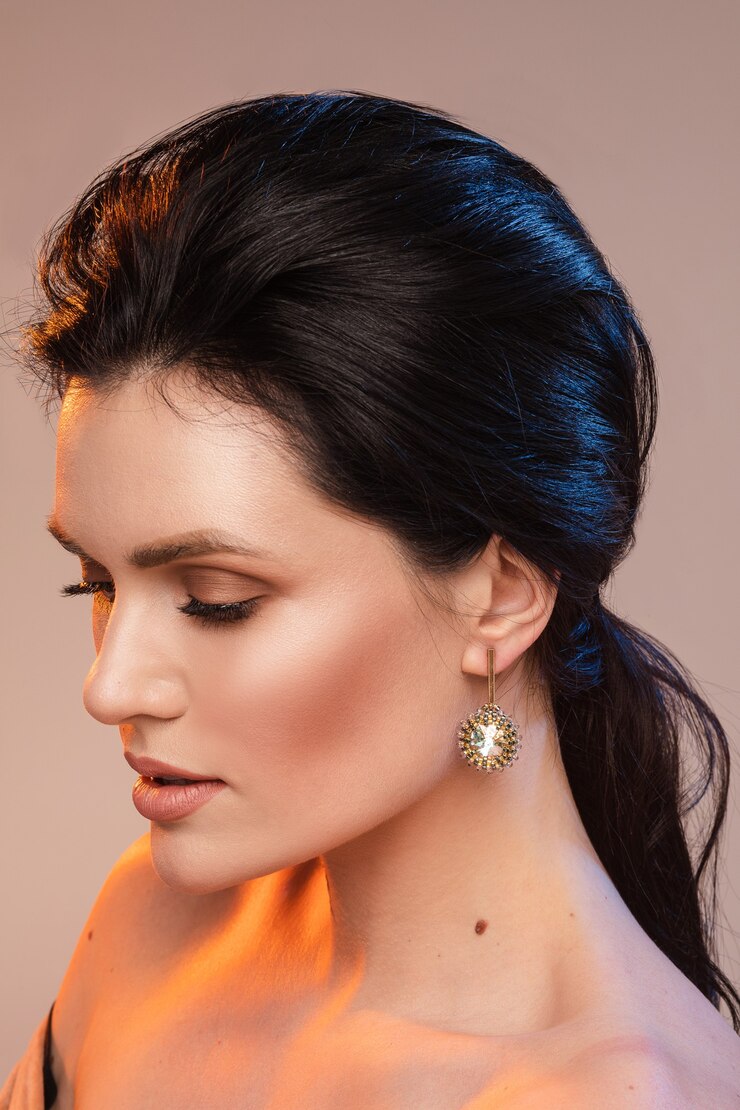With so many different types and places to fit every taste, ear piercings have long been a popular method for people to express themselves. There are several possibilities for people who want to beautify their ears, ranging from straightforward lobe piercings to more complex cartilage piercings. Every kind of piercing has a distinct aesthetic appeal, and many people opt to mix and match many piercings for a more distinctive and customized appearance. We look at some of the most common ear piercing designs below, along with what makes each unique.
1. Lobe Piercing: A Timeless Option
Lobe piercings are the most popular and conventional kind of ear piercing. Lobe piercings are typically the least painful and simplest to cure since they are placed in the soft, fleshy area of the ear. Because it can hold a range of jewelry, such as studs, hoops, and hanging earrings, it is the most adaptable kind of piercing. The lobe is frequently the most popular option for folks looking to add a basic yet fashionable touch to their appearance, and the majority of people receive their first piercing there. Lobe piercings are a fantastic choice for novice piercers because they may be applied to one or both ears and usually heal quickly.
2. Helix Piercing: An Elegant Choice for the Upper Ear
A hole is made in the cartilage along the outer rim of the ear at the top for the helix piercing. For people who like to give their ear piercings a little edge or individuality without deviating too far from the conventional style, this piercing is a popular option. In order to create a layered effect, helix piercings can be done as a single earring or as several piercings along the outer rim of the ear. A helix piercing may take longer to heal than a lobe piercing because of its position in the cartilage; it usually takes three to six months. For helix piercings, frequent jewelry alternatives include cuffs, studs, and hoops.
3. Tragus Piercing: Vibrant and Striking
The tragus, a little, rounded section of cartilage that partially encloses the ear canal, is where the tragus piercing is situated. Even though this piercing is a little more understated, its distinctive placement still makes a statement. Because of the thickness of the cartilage, the tragus is more difficult to pierce, but its striking appearance is making it more and more popular. A tragus piercing usually requires constant treatment to prevent infection, and the healing process might take three to six months. Tragus piercings are typically worn with small studs or tiny hoops, however larger jewelry can also be utilized for a more dramatic effect.
4. Conch Piercing: An Eye-Catching Accent
In a conch piercing, the cartilage of the inner or outer conch—the bowl-shaped portion of the ear—is punctured. The outer conch piercing is located along the outside ridge of the ear, and the inner piercing is positioned in the middle of the ear. This piercing is a daring choice that frequently turns heads when accessorized with gorgeous studs or big hoops. The healing period might range from six months to a year, and the conch is a more delicate place to puncture. Conch piercings, on the other hand, are more adjustable, with a wide variety of jewelry possibilities to accommodate various tastes.
5. The Dramatic Duo of Industrial Piercing
The industrial piercing is a striking option for people looking for a more dramatic and edgy appearance. In this piercing, a single long barbell connects two holes in the upper ear cartilage, usually in the helix area. Industrial piercings have a dramatic and eye-catching look, and there are several versions that let you customize the jewelry design and placement. The industrial piercing may take longer to cure than other kinds of cartilage piercings—typically 6 to 12 months—because it necessitates two distinct piercings in the cartilage. Following the right procedures is crucial for a seamless healing process, just like with other cartilage piercings.
6. Daith Piercing: A Well-liked Fashion with Possible Health Advantages
The daith piercing, which is situated in the tiny cartilage fold directly above the ear canal, has become more and more well-liked due to its unusual look and certain health advantages. Despite the lack of scientific proof, some people think that getting a daith piercing can help reduce the symptoms of migraines. The daith piercing, which is frequently accessorized with tiny hoops or studs, is fashionable and unique regardless of the health claims. Like other cartilage piercings, a daith piercing usually takes six months to cure, and adequate aftercare is necessary to ensure a good healing process.
Conclusion: Using Ear Piercings to Customize Your Look
More than just a fad, ear piercings are now a means for people to show off their uniqueness and inventiveness. With so many piercing options—from the traditional lobe to the daring industrial and daith options—people can personalize their ear piercings to express their individuality and sense of style. Ear piercings provide countless opportunities for individual expression, whether of your preference for a single, straightforward piercing or a more elaborate set of cartilage piercings. To guarantee the finest outcomes, it’s crucial to remember that all piercings need appropriate treatment and patience while they recover. Ear piercings can improve your appearance and offer a distinctive way to express yourself if they are taken care of.
